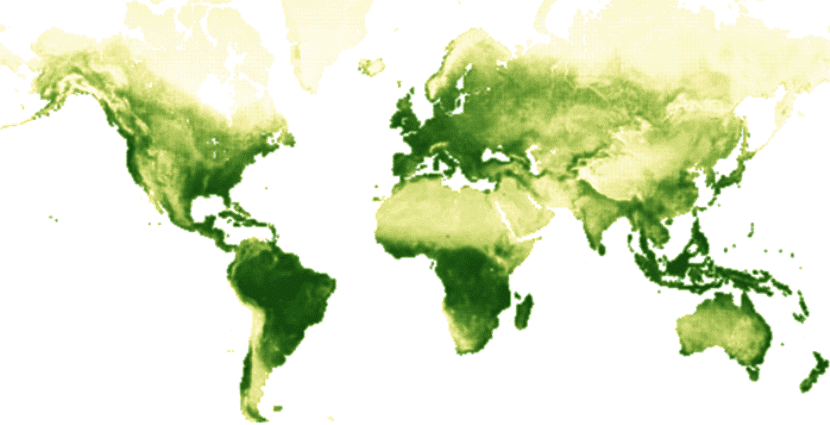
To determine the periods of the year we are based on the seasons, within which those periods of time to which we refer have some stable climatic conditions in a given region, within a certain range.
As you know, these periods are 4 (spring, summer, autumn and winter) and last about 3 months.In case you don't know, the seasons are actually due to the tilt of the Earth's spin axis with respect to the plane of its orbit with respect to SOL, thus achieving that different regions receive different amounts of sunlight depending on the time of year.
This is of course due to the duration of the day and the inclination of the Sun over the horizon.
Breath of the Earth
But I'm not going to talk to you about the seasons in general but about the seasonal cycles of vegetation.
With the change of seasons the vegetation also changes with its cyclesespecially for latitudes further from the equator.
For example, when autumn arrives the Facilities named deciduous lose their leaves to later recover them when spring enters.
The germination of seeds, their growth, the loss of leaves, flowering, etc. they are parts of the seasonal cycles of vegetation.
We, I mean human beings in general, have begun to interfere a lot in these seasonal cycles, even so, they make an appearance and leave us with images like the one I will show you next.
In this way we can see the seasonal cycles of vegetation which is nothing more than seeing the own Earth "breathing" and giving life. Since, all living things depend on these cycles in the growth of plants, whether for food, for oxygen and much more.
NOAA STAR
Nobody Bremer has created a series of images showing us the "respiration" of the Earth through these seasonal cycles of vegetation throughout a year.
The data comes from NOAA STAR, satellite applications and research center, which use the VIIRS sensor (Visible Infrared Imager Radiometer Suite) aboard the SNPP (Suomi National Polar-Orbiting Partnership) satellite to obtain detailed information about the vegetation of our Earth every week.
Seasonal cycles of vegetation
On the map of you can see the seasonal cycles through 52 weeks of duration that has a year, specifically these images represent the 2016.
The rise and fall of vegetation growth in the northern hemisphere they are particularly visible.
However, as different parts of the planet show, the other cycles and seasons are also seen.
The regions of New Zealand, Brazil and southern Africa they have the reverse cycle to that of the North.
It is also observed how in India the increasingly dry climate begins the monsoons.
Greenness
The specific variable that can be seen on the map is called "Greenness", or in more scientific terms, is the Normalized Difference Vegetation Index (SMN).
Green can be used to estimate the onset and senescence of vegetation, the start of the growing season, and phenological phases.
For areas without vegetation (desert, high mountains, etc.), the indicated values characterize the surface conditions.
The big challenge
The creation of the "respiration" of the Earth through the seasonal cycles of vegetation posed quite a challenge since the animation is made up of 50.000 cycles corresponding to the 52 weeks of the year.
Everything is separated by different sizes, colors and opacities so they were studied 3 different methods to see which one could be similar to the most natural one until you get the result that you can see above.
And if you are still interested in seeing the differences in more detail you can see the slower version here, although I warn you that if it is true that it is slower so you will have to be patient in seeing the 52 weeks.
As expected and thanks to the help of Nadieh Bremer we can enjoy this work in which we clearly observe how the vegetation acts as the lungs of the planet and we must take care of them and protect them at all costs.
